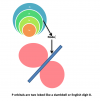How to do Redox Titration With KMnO4?
Redox titration with is a laboratory technique used to determine the quantity of an oxidizable substance. This step-by-step guide will provide you with the theoretical and practical information necessary to effectively use redox titration with KMnO4 in a laboratory setting.
Collect Materials and Set Up the Apparatus.
Before beginning the technique, it is important to gather all of the materials you will need for redox titration with KMnO4:
This includes:
a burette,
a pipette,
analytical balance,
laboratory stand,
pH meter,
electrodes,
magnetic stirrer,
secondary electrode (optional),
Methyl Orange indicator,
volumetric flask and stopper,
test tube rack,
Once you have collected all of your supplies and equipment, set up the apparatus for the titration according to your laboratory protocols.
Standardize a Solution of Potassium Manganate (KMnO4).
To standardize the KMnO4: solution, the titration method is used. Begin by accurately measuring 0.50g of Potassium Manganate into a 250ml volumetric flask and use deionized water to dilute up to the mark. Swirl the solution until all solid material has dissolved and then let it stand for approximately 30 minutes before beginning your titrations. Using a 5-10 ml pipette, measure out 25ml of your KMnO4: solution and place in the Erlenmeyer flask with a stir bar in it. You may need to adjust the volume increments depending on your laboratory’s requirements.
Perform an Iodometric Titration on an Unknown Sample.
To perform an Iodometric titration, take a sample of the unknown solution and transfer it to a conical flask. Add a few drops of starch indicator, then fill the burette with the prepared KMnO4: solution. Start with adding 1-2mL of your KMnO4: solution and swirling the flask gently. Continue this process until you notice a pale blue color that begins to fade in the flask when stirred– this is an indication that you have reached oxidation equivalence. Once equivalence is reached, calculate your normality factor by dividing the total volume added by 25ml.
Calculating Results and Comparing to Known Values for Accuracy.
After determining the normality factor of your solution, compare it to the known value. If the results are close but not exact, add small increments of KMnO4: until you reach the correct equivalence point. Once this is accomplished, calculate the amount of elemental Iodine that was present in your sample. To do this multiply your total volume by the normality factor. This gives you a final mass value in parts per million of iodine in your sample.
Cleaning Up After the Experiment is Complete.
After the experiment is finished, it’s important to clean up the work area. All glassware should be rinsed with water and then thoroughly cleaned using an appropriate solution. Make sure all lab materials and equipment are stored in a safe and secure place. Finally, there should always be a clear system for disposing of any chemical waste from the experiment. Be sure to follow all safety protocols when dealing with chemicals and other hazardous materials.
We hope you enjoyed the article and found it informative. It would mean so much if you could take a moment to like, comment, and share this post with your network. Your support goes a long way in helping us create more content for you. Thank you for investing your time into reading this post!
Read other lab experiments here

